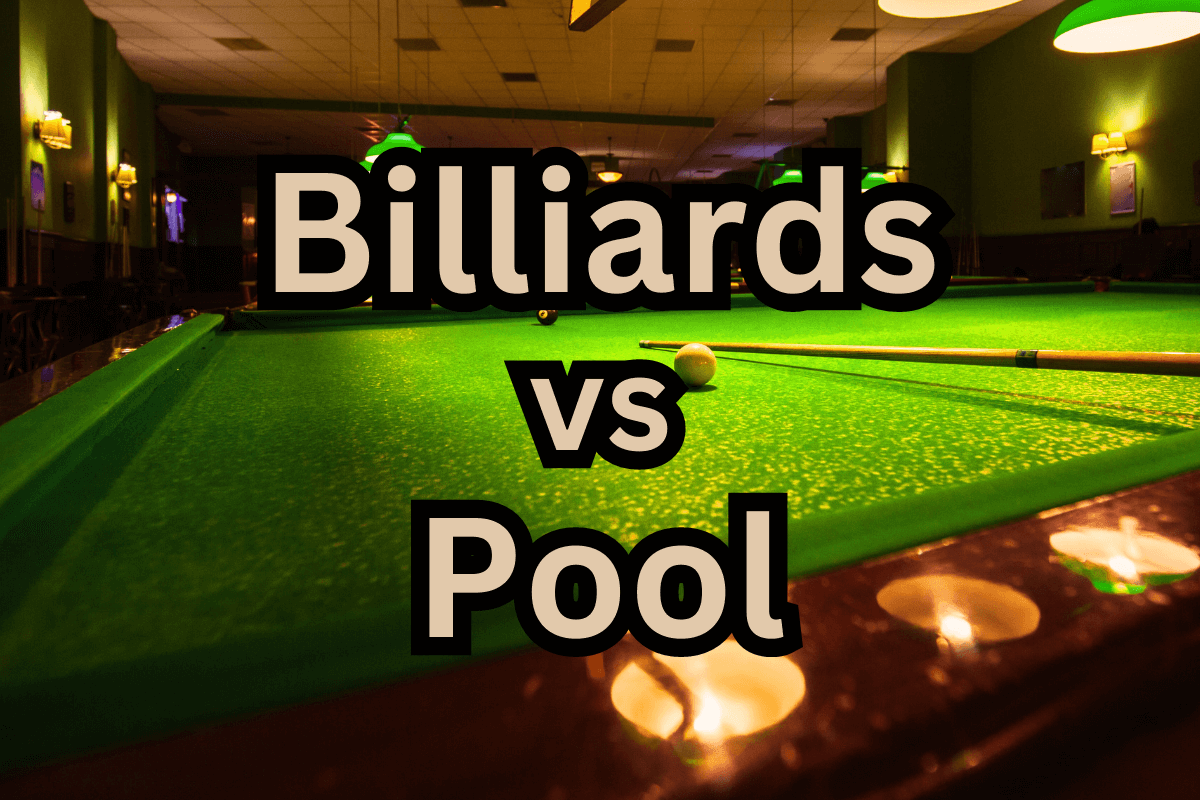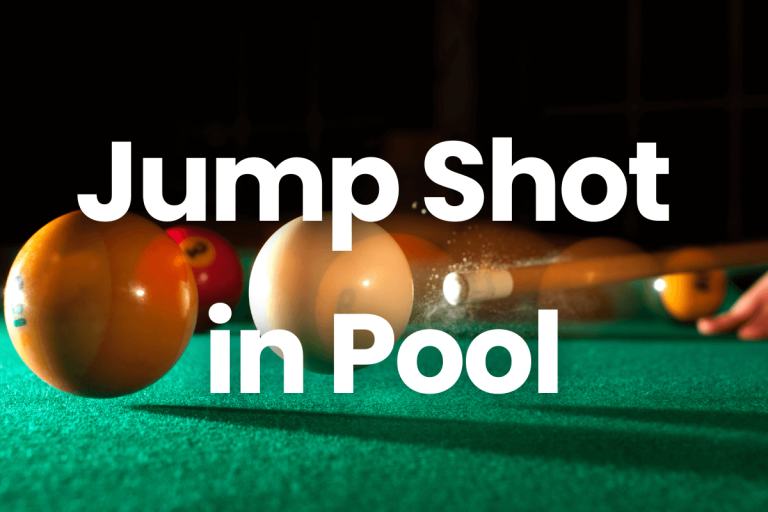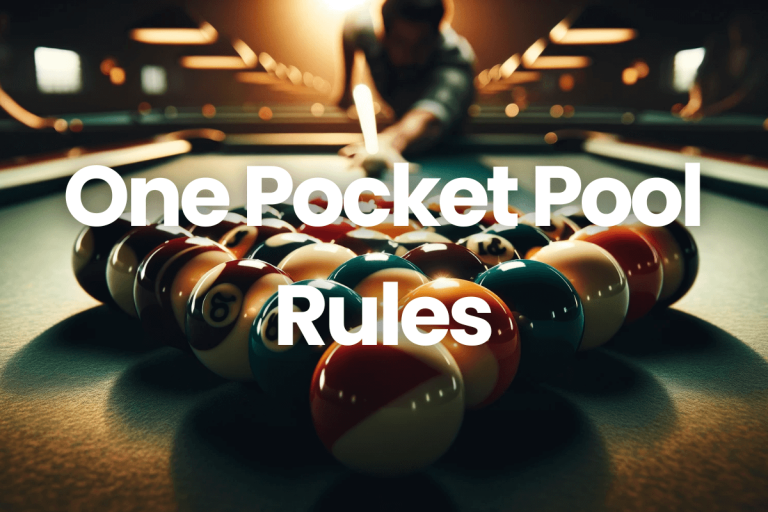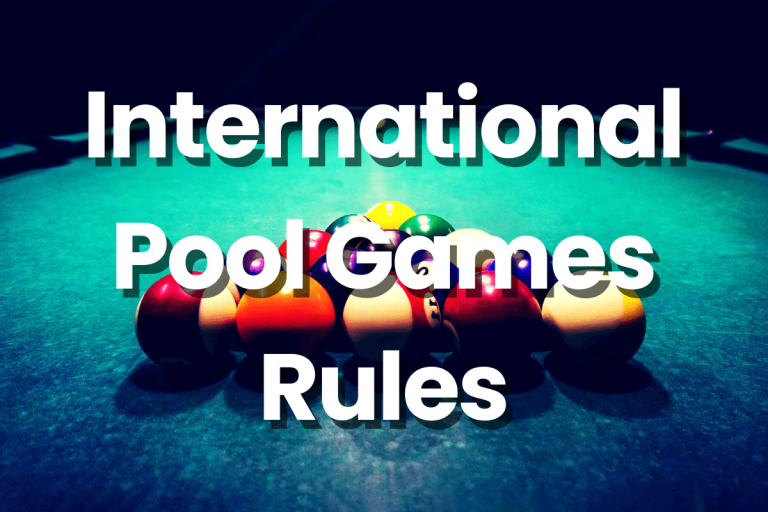Billiards vs Pool – Difference Between These Popular Games (2024)
Billiards and pool, both intriguing cue sports, are often enjoyed in bars and pool halls worldwide. Despite the common misconception, these terms are not interchangeable but denote distinct games. “Billiards vs Pool” highlights the differences in their rich histories, equipment, rules, and game variations. While billiards typically refers to games like carom or three-cushion billiards, played on a pocketless table, pool, known for popular variations like eight-ball and nine-ball, is played on a pocketed table. Understanding these differences enhances the appreciation and skill in each unique game.
History Of Both Games
Billiards, whose origins traced back to the 15th century, began as an indoor lawn game favored by European royalty and nobility. This early form of billiards was played on a rectangular table, which notably lacked pockets, a feature that distinguishes it from modern pool tables. As time progressed, the game evolved, retaining its status as a sophisticated leisure activity.
In contrast, pool, a variant of billiards, emerged in the 19th century. Its development was marked by the introduction of pockets in the table, adding a new dimension to the game. The name “pool” has intriguing origins, deriving from ‘poolrooms’ where bettors would “pool” their money while engaging in horse racing bets, and the game of billiards was often played in the same establishments. This evolution from billiards to pool represents a significant shift in the game’s mechanics and cultural context, leading to the diverse range of cue sports enjoyed globally today.
Both Games Equipment
Billiards (Three-cushion) Equipment
- Balls:
- Total of 3 balls: one cue ball and two object balls.
- Smaller in size compared to pool balls.
- Distinctly colored for easy differentiation.
- Table:
- Typically 10 feet in length.
- No pockets, emphasizing carom and precision shots.
- Cues:
- Generally longer than pool cues.
- Designed for precise control and accuracy.
Pool (eight-ball) Equipment
- Balls:
- Set of 16 balls: one cue ball, 7 solid-colored balls, 7 striped balls, and the black eight-ball.
- Larger and heavier than billiards balls.
- Standardized size and weight for pocketed gameplay.
- Table:
- Typically 6 to 9 feet in length.
- Equipped with pockets, integral to the game’s objectives.
- Cues:
- Thicker than billiards cues.
- Tailored for the broader range of shots in the pool.
Billiards vs Pool: Rules and Gameplay
The rules and gameplay of billiards and pool are distinctly different, each offering unique challenges and styles of play. Here’s an outline to clarify these differences:
Billiards Rules and Gameplay
Objective:
- The primary goal is to strike the cue ball so that it caroms off the object balls.
- Points are scored through successful caroms, not by pocketing balls.
Variability in Rules:
- Billiards encompasses various cue sports, each with its own set of rules.
- Examples include carom billiards and three-cushion billiards, where players must meet specific criteria like hitting the cushions a certain number of times before completing a carom.
Gameplay Style:
- Focuses on precision, strategy, and control.
- Games are often a test of skillful cue ball manipulation and strategic positioning.
Pool Rules and Gameplay
Objective:
- The aim is to pocket balls according to the rules of the specific game variant being played.
- Common games include 8-ball, 9-ball, and straight pool.
Structured Rules:
- Each pool variant has a well-defined set of rules.
- For example, in 8-ball, players must pocket either stripes or solids and then the 8-ball; in 9-ball, balls must be pocketed numerically.
Gameplay Style:
- Emphasizes both precision in shot-making and strategic planning in terms of ball sequence and table control.
- Requires a balance of power, accuracy, and tactical play.
Billiards and pool Variations
Both billiards and pool offer a variety of games, each with its unique appeal and set of rules. This diversity reflects the rich evolution and adaptability of cue sports. Here’s an outline of the major and minor variations within billiards and pool:
Billiards Variations
Major Games:
Carom Billiards: Played on a pocketless table, focusing on carom shots.
Three-Cushion Billiards: A challenging variant where the cue ball must hit three cushions before completing a carom.
English Billiards: Combines carom and pocket billiards elements, using both potting and carom shots.
Minor Games:
Five-Pins: Popular in Italy and Argentina, involving knocking over pins.
Balkline: A game that restricts the playing area with balklines, demanding precise control and strategy.
Pool Variations
Main Games:
8-Ball: The most popular variant, involving solids and stripes, culminating in pocketing the 8-ball.
9-Ball: Balls must be pocketed in numerical order, with the 9-ball as the game-winning shot.
Straight Pool: Players aim to reach a set number of points through continuous potting of any ball.
One Pocket: A strategic game where players target only one of the table’s pockets.
Other Variations:
Cutthroat Pool: A three-player game where each player defends a group of balls.
Bank Pool: Focuses on bank shots where balls must rebound off a cushion before being potted.
Conclusion
While billiards and pool share the common ground as cue sports, they distinctly differ in their histories, equipment, rules, and variations, as highlighted in the “billiards vs pool” comparison. Billiards, with its focus on caroms, contrasts with the pool’s emphasis on pocketing balls. Both sports continue to thrive globally, attracting enthusiasts and professionals alike. Their competitive scenes, though unique, occasionally intersect, underscoring the diverse and rich culture of cue sports that appeals to a wide range of players around the world.
FAQs
What are the main differences between billiards and pool?
Billiards is typically played on a pocketless table, focusing on carom shots, while pool is played on a pocketed table with the aim of potting balls. Equipment sizes and game rules also differ significantly.
Is the equipment the same for billiards and pool?
No, billiards uses smaller, lighter balls, and longer cues, while pool uses larger, heavier balls and slightly thicker cues. Additionally, billiards tables have no pockets, unlike pool tables.
Can billiards and pool cues be used interchangeably?
While it’s physically possible, they are designed differently for specific purposes. Billiard cues are longer for precision in carom shots, and pool cues are thicker for power in pocket shots.
Are the skills required for billiards and pool different?
Yes, billiards generally require more precision and control for carom shots, while pool requires a combination of precision and strategic planning for potting and positioning.
Is it easier to transition from billiards to pool or vice versa?
This can vary based on individual skills and preferences. Players with a strong foundation in basic cue sports skills may find transitioning between the two easier.
Which game is more popular, billiards or pool?
Popularity varies by region. Pool tends to be more popular in North America, while billiards has a strong following in Europe and parts of Asia.
Can billiards and pool be played on the same table?
Not typically, due to the different table requirements. Billiards is played on a table without pockets, whereas pool requires a pocketed table.
How do I know whether billiards or pool is more suitable for me?
This depends on your interests. If you prefer strategic, precision-based play, billiards might suit you. If you enjoy a mix of strategy and action, the pool could be more appealing.







